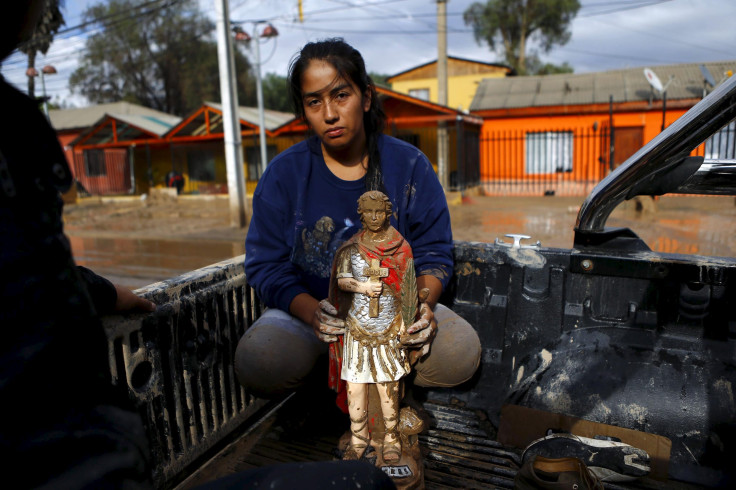
Fourteen are confirmed dead and dozens are still missing following heavy rains in the Chilean Andes that flooded the northern regions of Atacama, Antofagasta and Coquimbo last week. The rains started on Tuesday March 24th but have since ceased. Rescue workers are racing to evacuate residents that now face blackouts, blocked roads, and contaminated water systems.
“As we are able to reach different places, these figures are probably going to climb,” Chilean President Michelle Bachelet said on Saturday. “The outlook is bleak and we need to speed things up to get to villages that remain isolated and need our help.”
The area around Atacama and Antofagasta is one of the world’s driest. Some areas receive less than a tenth of inch of precipitation per year. That’s a twentieth of the amount of rain found in California’s Death Valley. Even though last week’s rains only amounted to about one inch, runoff ran right over impermeable watershed, causing regional rivers to overflow.
Flooded towns, some 80 percent destroyed, saw cars overturned and houses filled with muddy sludge. Residents formed human chains to cross flowing roads. Front-end-loaders were used to transport people to safety. Government rescue crews reached out to miners’ encampments and rural towns that were cut off by washed-out roads.
Even for Chileans accustomed to hardship, it was one tragedy too many. Victor Zamora, who was trapped underground with 33 other miners in 2010, lost his entire house as the waters swept away most of his town.
“This is another tragedy, we have lost everything,” Zamora told the AFP.
Chile’s disaster management teams are balancing the challenges of three simultaneous natural disasters. An earthquake, 6.8 on the Richter scale, rocked Samoa yesterday, and forest fires continue to threaten communities, according to official twitter accounts.
© 2024 Latin Times. All rights reserved. Do not reproduce without permission.


